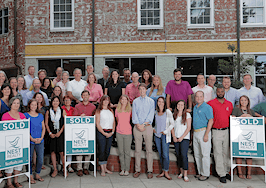- Comedy journalist Adam Conover addresses the role of redlining in the creation of America's most popular housing option: suburbs.
- Is the industry doing enough to promote the benefits of homeownership within minority communities?
Have suggestions for products that you’d like to see reviewed by our real estate technology expert? Email Craig Rowe.
First, some context:
The 2016 Zillow Report on Consumer Housing Trends reported that 75 percent of today’s homebuyers are Caucasian and have a median household income of $87,500. Buyers represented as black/African-American made up 7 percent. For reference, African-Americans made up 13.3 percent of the total U.S. population, according to the latest census figures.
When it comes to buyers of all demographics, 83 percent seek freestanding single-family homes, the majority of which are located in America’s suburbs.
I included the above facts to help explain why I was very happy to see Inman Coast to Coast member Marguerite Martin post a segment from comedian Adam Conover’s TruTV series, “Adam Ruins Everything.”
The 6:00 snippet was about the history of the American suburb.
I came across the piece on CollegeHumor.com’s Facebook page this morning as well, and rushed to the Inman editorial Slack channel to discuss the merit of this very column.
The gist of Conover’s show is easy to grasp. He leverages wit and hard fact-based arguments to challenge an array of accepted American social conventions, from diets to hospital economics to the flawed way we analyze employment figures.
In the episode Martin shared, Conover leaves almost nothing untouched about our commoditized living preferences, addressing the inherent danger of cul-de-sacs and even our absurd obsession with lawn care.
The most provocative section discusses the role of redlining in the formation of suburbs, and how it became the de-facto strategy on the part of our government, and much of our citizenship, to abolish minorities from the American dream.
Sound harsh?
It’s not. His sources are clear.
Real estate agents are drilled with Fair Housing Act statutes in licensing and continuing education classes.
Like the naive dad character in Conover’s episode, we can rest assured that the vast majority of real estate agents do not enter their trade with the intent of perpetuating the racist and financially biased policies that continue to haunt the industry like malevolent phantoms.
However, is the industry doing enough to exorcise those demons?
Or like dad, is the industry blissfully plugging its ears, hoping its only the wind making all the racket in the attic?
Clint Skutchan was the CEO and director of Realtor and Consumer Advocacy for the Fort Collins, Colorado Board of Realtors when it launched an affordable housing campaign called “Affordable=Achievable” in 2014. I sent him the video.
“Well, the racial aspects of it [the video’s subject] don’t relate as much to us here in Colorado because we’re not that diversified. I think it’s more of a wealth issue than a race issue,” he said.
I asked him if practicing agents believe that, because that’s precisely the root of the problem.
(Clint has since left the industry to start a communications consulting and training company that works in part on organizing social advocacy campaigns.)
“Certainly it’s about the economics of getting in early to get the most out. In general, no, the industry isn’t doing enough to address affordability, but I don’t think there’s been a noticeable enough shift across the nation yet for the industry to take notice. Agents are part of their community, too, and when they become impacted, there’ll be a greater focus on it.”
Important questions linger, though, and Conover’s guest, investigative reporter Nicole Hannah-Jones of The New York Times, not-so-subtly stakes us in the heart with the most important one: many of the problems redlining created haven’t gone away. They’re worse, she says in the episode.
Yes, real estate agents know the term, are largely personally against it, know why not to do it, and know the ramifications for being caught doing it.
But, is the act of merely not redlining the same as working to end its long-standing impact on the shape of our housing demographics?
I don’t think it is.
What do you think?
Have a technology product you would like to discuss? Email Craig Rowe





